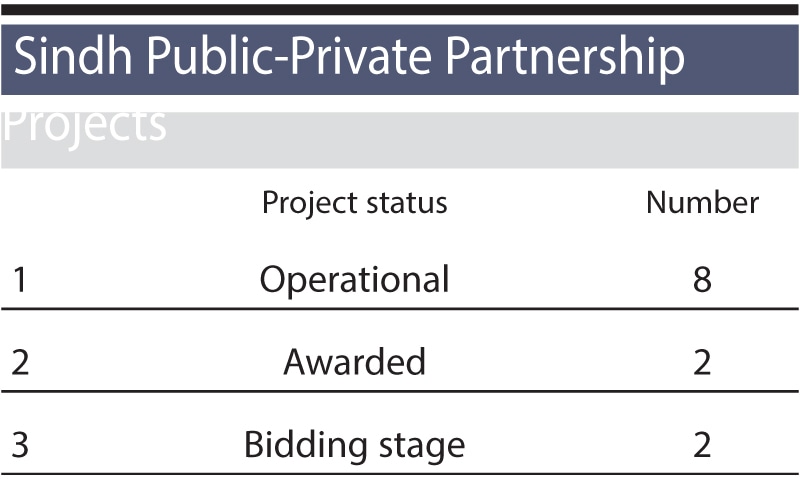It is interesting to watch the changing dynamics of the relationship between corporate Pakistan and the Pakistan Peoples’ Party. The deep hatred towards Zulfikar Ali Bhutto’s party seems to be melting away in the business circles as the next generation of tycoons rediscovers the party that is leading the way in Pakistan in the realm of public-private collaboration for development.
It is indisputable that Sindh has succeeded in gaining the trust of the reluctant private sector on the strength of its approach and performance in handling the technical, financial and legal challenges associated with the complex option of inclusion of private sector in projects of public interest.
The performance of Sindh, ruled by Pakistan Peoples’ Party, has been noted by the global monitors. A recent report, ‘The 2018 Infrascope’, an index and study by The Economist Intelligence Unit that evaluates the environment for public-private partnership in Asian countries made an exception to include Sindh along with Gujrat in India, ‘as potential models of best practice’. Sindh ranks 6th of 19 entities assessed. Its ranking was three places above Pakistan that was graded at 9th position in the said index.
Commenting on Sindh the report states, “Sindh’s most positive performances are in its regulatory environment (especially in partnership selection criteria and fairness and openness of bids and contracts) and its institutional environment, including the stability of its public-private partnership agency, the resourcing of project selection and implementation, and institutional transparency and accountability.”
The Economist included Sindh as a ‘potential model of best practice’ in its study evaluating the environment for public-private partnership in Asian countries
“There were a lot of apprehensions initially but it would be unfair if we fail to give the credit where it is due. Our experience with the Government of Sindh was exemplary. They were open and helpful all along and delivered on their part of the deal ahead of time”, Shamsuddin Sheikh, former CEO of Sindh Engro Coal Mining Company (the biggest public-private joint venture thus far), told Dawn during a conversation some time back.
“Several local and foreign companies are looking at sewerage, waste management, water and other sectors with interest”, a business leader confided.
Discussing the stellar performance of Sindh, relevant officers in Punjab were not comfortable. Initially, they doubted the veracity of the perception that Sindh is ahead of the rest but later tried to explain reasons for the outcome. The top three reasons why Sindh outperformed Punjab included: comparatively better financial status of Punjab (it could afford mega infrastructure projects on its own without private sector help); concentration of forward-looking entrepreneurs and companies in Karachi and the failure of the public-private partnership unit in Punjab to highlight its performance.
“Under the new government that assumed power last year, Punjab is now focusing on the inclusion of the private sector in development endeavours in the province with new zeal. To streamline all relevant entities for fast pace movement, the province has decided to create a Public-Private Partnership Authority. There are several proposals in the pipeline and you will hear more on this front soon”, said Agha Waqar Javed, who heads Public Private Partnership Cell in Punjab.
Taking to Dawn Khalid Mehmood Shaikh, a founding member of the public-private partnership unit in Sindh, was convinced of the need and the potential of the arrangement in Sindh where social divides are more pronounced and the culture of patronage rampant. He said to check waste of public utilities, pricing is important.
“Competition is the best solution to improve the quality of service at a minimum cost. We need to let the market forces of demand and supply determine the price of a service and then the government can intervene if it so wishes to provide some risk cover to the producer or partial subsidy to users”, he argued.
He was in favour of de-bundling city-wide organisations for cost-effective solutions. Sheikh was all praise for his boss who he said valued merit and efficiency and has the vision to develop Sindh sustainably.

“The credit of the success of partnership projects goes to Chief Minister Murad Ali Shah, who is well aware of the problems and understands currents and counter-currents in the province. With his unwavering support, we have been able to pool in a team of credible and efficient officers and picked talent and companies on merit to pursue the cause. Yes, we have done well and hope to do still better going forward”, he said.
Sindh, the province lagging in most socio-economic indicators of wellbeing, has updated its public-private partnership ecosystem for greater engagement of the private sector to improve the civic amenities and social service. From health and education to highways, water, sanitation, mining and power generation almost all sectors have been explored for partnership projects.
“There is growing realisation in the provincial hierarchy that the top-heavy public structure neither has the fiscal capacity nor the structural strength to steer development on its own. The induction of the private sector in the development matrix of the province is necessary to avert the danger of the collapse of weak, overstretched bodies already crumbling under their own weight”, remarked another member of the PPP board.
Over the past two decades, Punjab and Khyber Pakhtunkhwa fared better than Sindh in comparative human indicators of wellbeing, literacy, nutrition, accessibility of medical care, provision of water and other basic utilities. The Pakistan Peoples’ Party that returned to power in the last three elections is still struggling to deliver on the promise of a better life for constituents. Even the higher fiscal autonomy, achieved under its rule, failed to translate into a more prosperous province with a better spread of basic amenities.
Published in Dawn, The Business and Finance Weekly, September 9th, 2019













































